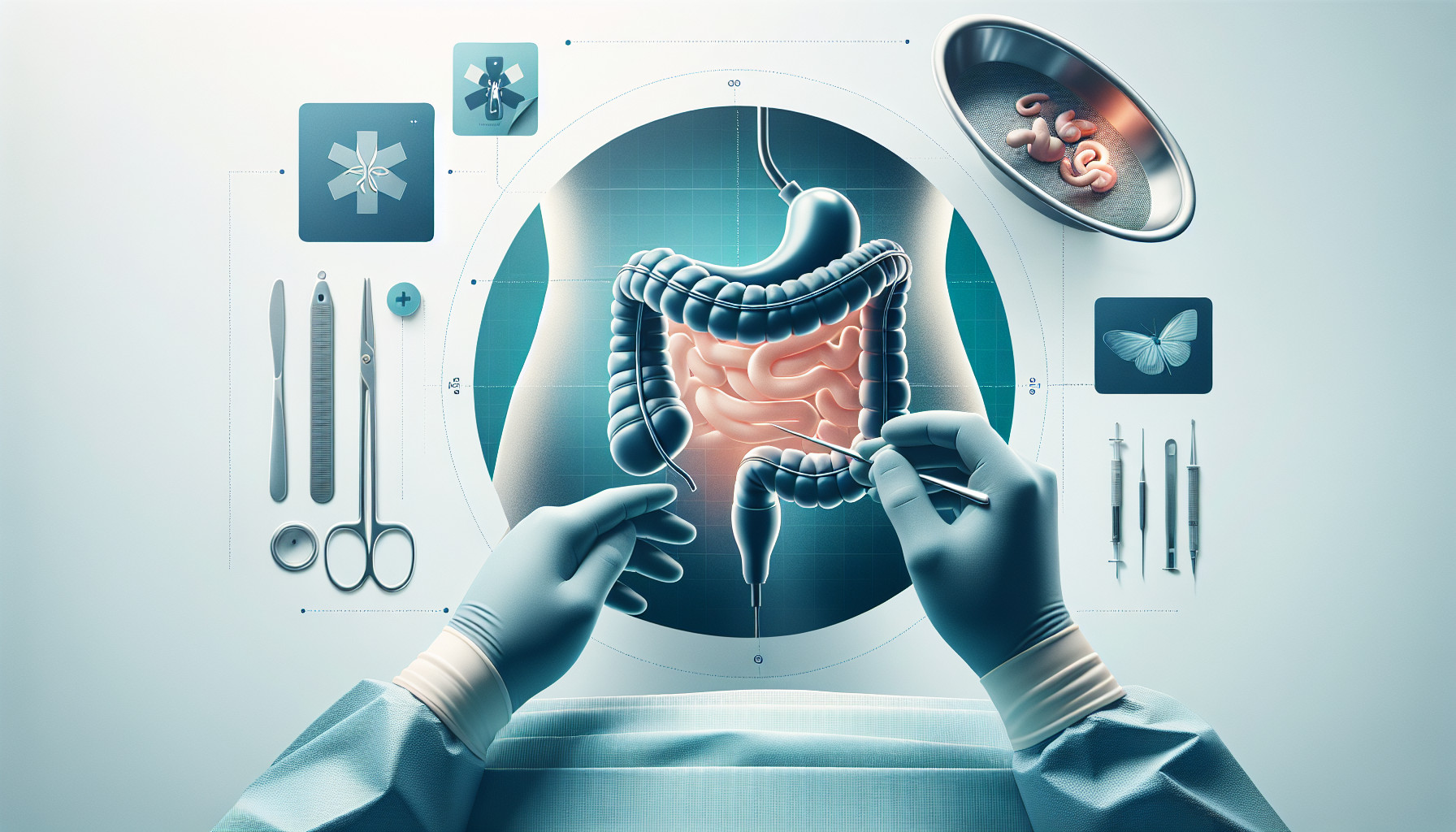Our Summary
This research paper is about a study comparing two methods of removing a sample during a certain type of colon surgery. The two methods are transanal extraction (removing it through the anus) and transabdominal extraction (removing it through the abdomen).
The study looked at results from three different trials, which involved a total of 353 patients. Of these, 169 had the transanal extraction method and 184 had the transabdominal method.
The study found that the overall risk of complications after surgery was about the same for both methods. This included the risk of anastomotic leakage, a complication where the joining of two parts of the bowel leaks.
However, the study did find some advantages to the transanal method. Patients who had this method experienced less severe pain after surgery, were able to pass gas sooner, and had shorter hospital stays.
In conclusion, the study suggests that the transanal method does not increase the risk of complications and may have some short-term benefits compared to the transabdominal method.
FAQs
- What are the two methods of removing a sample during colon surgery discussed in this study?
- According to the study, what are the potential benefits of the transanal extraction method compared to the transabdominal method?
- Did the study find a difference in the overall risk of complications between the transanal and transabdominal extraction methods?
Doctor’s Tip
One helpful tip a doctor might tell a patient about colectomy is to discuss with them the different extraction methods available and their potential benefits and risks. It is important for the patient to be informed and involved in the decision-making process to determine the best approach for their individual situation. Additionally, following post-operative care instructions and attending follow-up appointments are crucial for a successful recovery after colectomy surgery.
Suitable For
Patients who are typically recommended for colectomy include those with conditions such as colon cancer, inflammatory bowel disease (such as ulcerative colitis or Crohn’s disease), diverticulitis, or bowel obstructions. Additionally, patients who have not responded to other treatments or have a high risk of developing complications may also be recommended for colectomy.
In the context of the study comparing transanal and transabdominal extraction methods, patients undergoing colectomy for any of the aforementioned conditions could potentially benefit from the transanal method due to its potential for reduced pain, quicker recovery, and shorter hospital stays. However, individual patient factors and the specific nature of their condition would ultimately determine the most appropriate method for colectomy.
It is important for healthcare providers to carefully evaluate each patient’s unique circumstances and consider factors such as their overall health, the severity of their condition, and their personal preferences when recommending a colectomy method. Ultimately, the goal is to provide the best possible outcomes for patients undergoing colon surgery.
Timeline
Before colectomy:
- Patient is diagnosed with a condition that requires removal of part or all of their colon
- Patient undergoes pre-operative testing and preparation
- Patient discusses surgical options with their healthcare provider
- Patient may need to follow a special diet or take medications to prepare for surgery
During colectomy:
- Patient undergoes surgery to remove part or all of their colon
- Surgeon chooses either transanal or transabdominal extraction method to remove the sample
- Surgery typically takes several hours
- Patient is monitored in the recovery room before being transferred to a hospital room
After colectomy:
- Patient may experience pain, discomfort, and fatigue in the days following surgery
- Patient is monitored for signs of complications such as infection or bowel leakage
- Patient may need to stay in the hospital for several days to recover
- Patient gradually resumes eating, drinking, and moving around as they recover
- Patient may need to follow a special diet or take medications to aid in digestion
- Patient may need to undergo follow-up testing or appointments to monitor their recovery
Overall, colectomy is a major surgical procedure that requires careful preparation, monitoring, and recovery. The choice of extraction method may impact short-term outcomes such as pain, gas passage, and hospital stay, but the overall risk of complications is similar between the two methods.
What to Ask Your Doctor
- What are the potential risks and complications associated with a colectomy surgery?
- How does the transanal extraction method compare to the transabdominal extraction method in terms of recovery time and pain management?
- Will I need a temporary or permanent colostomy following the surgery?
- What is the expected length of hospital stay and recovery time for each extraction method?
- Are there any long-term implications or differences in outcomes between the two extraction methods?
- How experienced are you in performing colectomy surgeries, specifically using the transanal extraction method?
- Are there any specific dietary or lifestyle changes I should make before or after the surgery?
- What is the success rate of the transanal extraction method compared to the transabdominal extraction method in terms of removing the sample effectively?
- How soon after the surgery can I expect to resume normal activities and work?
- Are there any alternative treatment options to consider before moving forward with a colectomy surgery?
Reference
Authors: Ryadkova EN, Mingazov AF, Achkasov SI, Sushkov OI. Journal: Khirurgiia (Mosk). 2023;(11):6-15. doi: 10.17116/hirurgia20231116. PMID: 38010013
